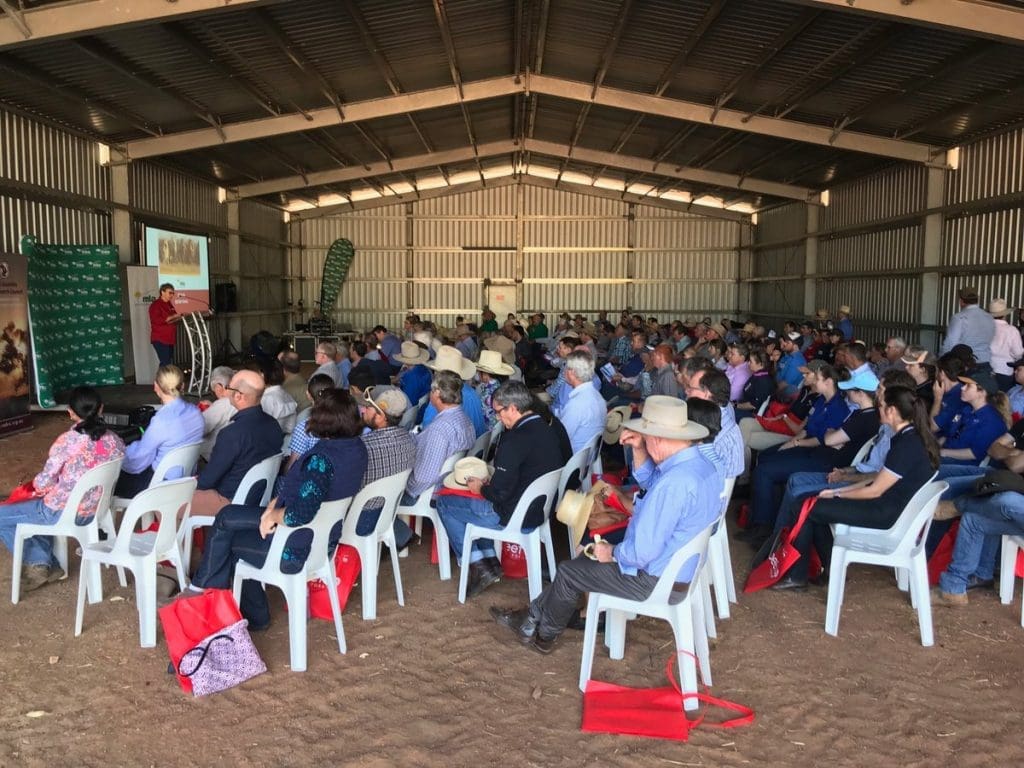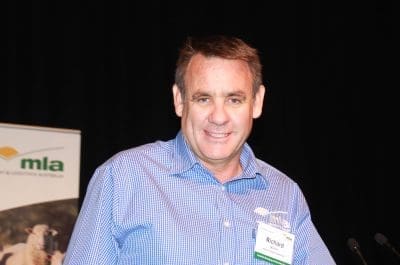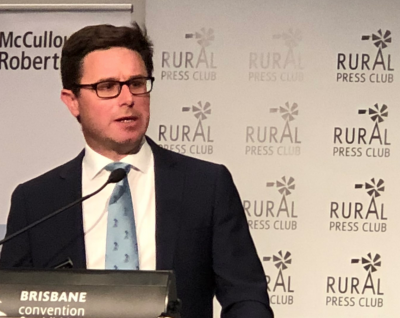
More than 200 cattle producers attended the BeefUp forumSpyglass Research Station near Charters Towers last Friday to hear updates on industry research programs and to have their say on research prioririties. Picture: MLA
MARKETING or research – which should get the biggest share of grower levy funds?
Finding the best balance between spending money on marketing to increase demand versus research to create a better product and more efficient production systems has been a perennial topic of debate for every industry that collects compulsory grower levies.
Typically there are strong views among growers as to whether marketing or research should dominate investment but little consensus on what the right split should be.
How levies are allocated between the two vary from industry to industry – In wool the current split is 60pc in favour of marketing and 40pc for R&D; the horticulture industry devotes more levy funds to R&D than marketing, and almost all of the compulsory levies paid by Australian graingrowers go to R&D.
In the grassfed cattle industry, marketing receives the lion’s share of direct levy funds under current arrangements, capturing $3.66 from every $5 per head cattle transaction levy paid, almost four times the 92 cents that goes to RD&A (research, development and adoption).
The levy allocation debate emerged again at BeefUp research forums last week where questions were asked about whether the research spend should be boosted, and, also whether the $5 per head levy should be increased. The Miles forum was told the $5/head levy has about 30 percent less buying power today than it did when the levy was set at its current level 12 years ago.
 When asked a question about levies at the Spyglass BeefUp Forum last Friday, MLA managing director Richard Norton said decisions about levy allocations and quantums were up to grassfed producers and their industry body, the Cattle Council of Australia, to debate.
When asked a question about levies at the Spyglass BeefUp Forum last Friday, MLA managing director Richard Norton said decisions about levy allocations and quantums were up to grassfed producers and their industry body, the Cattle Council of Australia, to debate.
But in answering the question he provided an update on the extent to which R&D funds are now boosted through leveraged funds, adding perspective of which some producers may not be aware.
Multiplying R&D ‘bang for buck’ through leveraging
While R&D activities receive only 25 percent of the levy funding that is directed to marketing in the grassfed cattle industry, the total amount of money spent on R&D projects for the industry is much greater than the direct levy investment into R&D alone, because of leveraged public and private funds.
The Federal Government makes a fund available to match every dollar spent by grower levies in the red meat sector on R&D with a dollar of public money (This ‘matching fund’ applies only to levies spent on R&D, not marketing, and is available to the three red meat research and development corporations: MLA, the Australian Meat Processor Corporation and LiveCorp).
The total funding available is capped at 0.5 percent of the gross value of red meat in Australia annually, and moves up and down according to production and price levels each year.
In recent years MLA has stepped up efforts to seek private investment for red meat industry research through the MLA Donor Company (MDC), and has worked with IP owners in ‘R&D for profit’ projects to help to commercialise their IP, in exchange for a share of royalty returns which go back to MLA and its research funding pool.
MLA accesses 100pc of matching funds for first time
When Mr Norton joined MLA, he said the company was only attracting enough commercial investment to access about 50-60pc of the matching funds the Federal Government made available.
However, this year, for the first time, MLA would go close to drawing down almost the entire amount available – 98.8pc.
To illustrate the extent to which leveraged funds boost the spending power of grower funding for R&D, Mr Norton estimated that of the total value of projects MLA MDC is currently running – worth around $373 million – only about 20pc of that total draws from direct grower levies.
Mr Norton told Beef Central he believed a few things had happened in the last couple of years to help MLA leverage 100pc of available funding:
- The higher profitability through the red meat sector in recent years which had encouraged more companies to spend more money on R&D; and
- MLA’s increased activity in going out and actively seeking investors in red meat R&D funding projects.
The leveraging effect means that while research amounts to only 25pc of grassfed levy expenditure, the total amount spent on red meat research is similar overall to the amount invested in marketing.
Model for future
Mr Norton said the proactive approach to building R&D capacity beyond direct levies had demonstrated that if you want to do more R&D “you can go and find other ways to do it”.
“If you have used all the levy funds for the whole of industry, you need to be more efficient and go and find other domestic and foreign investors,” he said.

David Littleproud addresses the Rural Press Club of Qld lunch in Brisbane. Picture: Rural Press Club of Qld
Last week a review of Research and Development Corporations to be conducted by EY (Ernst and Young) was announced by Minister for Agriculture and Water Resources David Littleproud.
The Minister said he wants to see Government red tape reduced and RDCs become more agile to ensure Australia becomes a world leader in agricultural science, innovation and technology, and to increase the opportunities to attract more young people into agriculture.
Mr Norton said MLA’s work to increase investment to further leverage levy payer and government R&D funds showed it was already well advanced down that path.
“We have worked hard in the last four years to understand that MLA has to work out other ways of attracting investment, not just levy funds.
“The minister is saying RDCs need to become more agile and ready for the future.
“In defence of the red meat industry, I think the red meat industry has achieved a lot by going out and finding investors up to $180m of investment in our sector, which has now positioned itself to be making money.”

While I agree with your sentiments Val, to be effective the national advocacy body for grass-fed cattle producers needs to be owned by Australia’s cattle producers and their board directly elected by the same producers. Cattle Council is owned by the dying state farming organisations and its directors are appointed by these organisations. We propose to reduce the transaction levy by $1.50 to $3.50 allowing producers to hang on to the $1 and pass over $0.50 to a new democratic organisation replacing Cattle Council.
Australian Cattle Industry Council
Both Marketing and R&D are important investments for cattle producers. However, it is possible that producers may also consider advocacy/national policy issues as a priority for funding as well, which is not recognised in the $5 transaction levy. Start a conversation about reducing the Marketing levy by 50c and applying it to Cattle Council of Australia to fund the development and recurrent funding required to operate an effective and well resourced national cattle industry advocacy/policy making organisation, which has been such a hot topic over recent years. The cattle industry is a significant contributer to the Australian economy and should have direct access to both Australian and International governments.